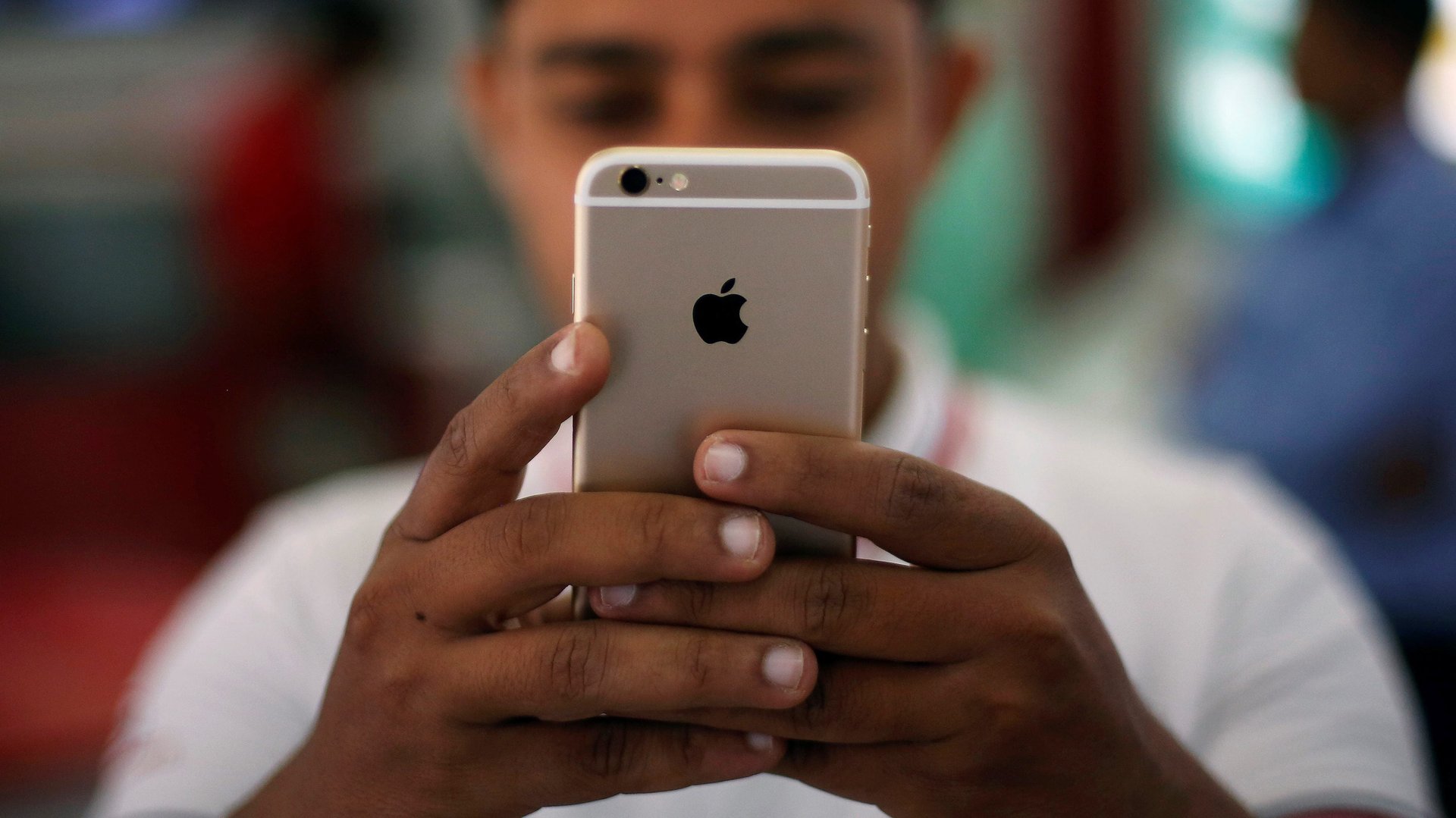Apple’s new chief in India has a lot to fix
It’s turning out to be a difficult December for Apple in the subcontinent.


It’s turning out to be a difficult December for Apple in the subcontinent.
On the heels of a substantial slowdown in revenue, the tech behemoth has lost its country manager for India.
Sanjay Kaul, Apple’s India chief, has put in his papers, The Economic Times reported on Dec. 19, citing unnamed sources. Kaul is leaving after six years at the company, during which time India went from being virtually ignored by Apple to becoming its next frontier.
A BITS Pilani graduate, Kaul attended the Gustavson School of Business in Canada for his MBA in 1998 and went on to work at fuel-cell company Ballard Power Systems. He returned to India a decade later as Blackberry’s director of channel sales before beginning his tenure at Apple in 2011 as the head of iPhone sales. A year-and-a-half ago, he was promoted to India head, according to his LinkedIn profile.
Michel Coulomb, a French national who has been with Apple since 2003 and recently served as the managing director for Apple in south Asia, is set to take the reins, Reuters reported. Apple did not respond to Quartz’s request for comments on these changes.
Kaul’s misses
Over the past two years, Apple has made several efforts to win over India. CEO Tim Cook himself made a trip to the country in May 2016, a first for an Apple chief. Yet, the company’s performance has been underwhelming.
Android remains king in India, a market where buyers prize affordability. To match up, Apple has been trying to lower prices. For example, it resurrected the 32GB iPhone 6 (ditched when the iPhone 7 was launched in 2016) with a new retail price of Rs28,999 ($435) in March this year—a significant drop from its Rs53,500 ($802) 16GB variant launched in 2014.
Still iOS, with a mere 3% share of the world’s second-largest smartphone market, is not a patch on Android. In fact, once a leader in the premium segment (i.e. handsets priced above $450), Apple lost out to Samsung’s higher-end range by mid-2017.
Meanwhile, the company’s attempts at local manufacturing in India haven’t succeeded though it could help considerably reduce prices—the locally-assembled iPhone SE costs as little as $320.
Production plans have hit a snag as Apple sought a relaxation of the mandatory 30% local-sourcing rule and eyed a 15-year tax break on imported equipment and components. Although Cook went all out meeting officials and business leaders during his India trip, Apple’s wish-list was still turned down by the government.
While a manufacturing facility did come up, it hasn’t been smooth sailing. Around September, the Winstron plant in Bengaluru, with an annual capacity of 75,000 units, stood under-utilised. Apple had overestimated the demand for the iPhone SE.
On the retail front, too, progress has been slow.
Currently, Apple sells its devices through third-party retailers and e-commerce sites. For a few years now, it has been vying to launch its own stores and even got permission in 2016. However, there’s been no official word since.
“Apple will need to sort out its long-pending plans of starting its own flagship retail stores and other plans like manufacturing which need looking at a different angle initiated by (the) new management,” Tarun Pathak, an associate director with Hong Kong-based Counterpoint Research, told Quartz.
Challenges for Coulomb
Coulomb will inherit a company that’s fighting on multiple fronts. And his troubles may have just escalated.
On Dec. 15, the Indian government hiked the customs duty on electronic items like TVs, microwaves, and mobile phones from 10% to 15%. The price of the already-expensive iPhone increased by an average of 3.5%. All Apple devices, except the locally-assembled iPhone SE, were affected by this.
“(Apple) will need to work on its pricing and expansion strategy which is going to be impacted by the increase in duties recently,” Pathak said.
Another major challenge for Coulomb will be to get permission to sell refurbished iPhones in India. Apple has made several attempts to convince the Indian government, but has not been given a go-ahead owing to the country’s snowballing e-waste problem.
If that wasn’t enough, Chinese brands are giving stiff competition to Apple’s Rs80,000-plus devices with their phones in the Rs20,000 range. ”Apple needs to be careful about how China-based companies are growing,” Jaipal Singh, senior market analyst for client devices at International Data Corporation (IDC), told Quartz. Tailored for Indians, these phones support multiple regional languages and have unique features like multiple SIM slots, allowing users to switch between networks for cheaper rates. By the end of last year, Chinese smartphones accounted for 46% of the handsets sold in India.
But all is not lost. “One trend is positive in the next year—people are ready to pay extra on their next purchase, and the average price (of devices) has also increased,” Singh said.